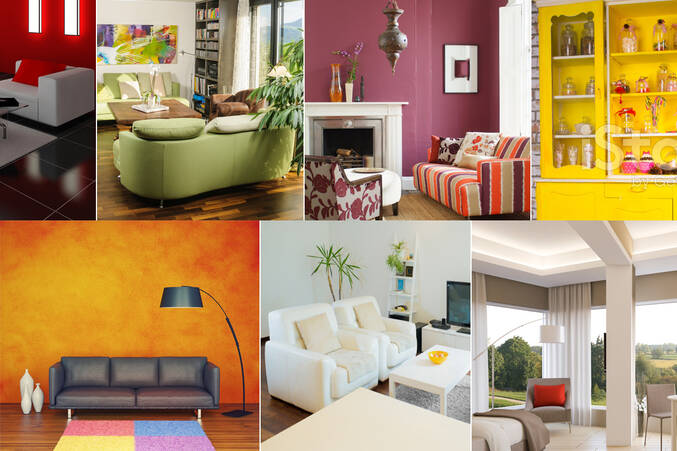Photographs: iStock
Colours mean different things to different people. They also have an impact on the human brain and environment. Red, yellow and blue are three basic colours that have independent perceptions. Let’s decode what different colours stand for and how can you use them in your home with architect Manmohan Khanna.
1. Red: This colour is associated with power, danger, strength, passion, aggressiveness and excitement. It leaves you feeling energetic.
2. Yellow: This is the colour of friendship, joy, warmth, empathy and intelligence. A room in this colour is perceived as cheerful and bright. Interior spaces in yellow give you an inviting feeling.
3. Blue: This colour represents a cool, quiet and reserved personality. The tranquility and serenity of blue produces a formal environment. Blue colour can provide dignity and formality to a room full of clothes or crockery. Similar to the depths of ocean and heights of the sky, blue colour in interior spaces brings a feeling of depth to human perception.
4. Green: For a refreshing, friendly, cool, and peaceful environment, you can go for green. It also gives a feeling of brightness. It represents a symbol of hope, good luck and prosperity and has the ability to generate similar feelings when used in correct proportions.
5. Orange: This colour corresponds to excitement, power and aggressiveness albeit in lower amounts compared to red and yellow color. It represents courage, hospitality and gives a warm impression.
6. Violet: This signifies royalty. The lighter shades mixed with other colours gives a quiet and dramatic feeling.
7. Brown, grey and black: These colours are preferable for a mysterious and natural feeling. However, it creates a depressing feeling if used as a background colour on dark tones.
8. White: If you want peace, purity, innocence, faith and simplicity, white is the colour. You can use this color with any other colour in any ratio you like to get the desired impact.


















